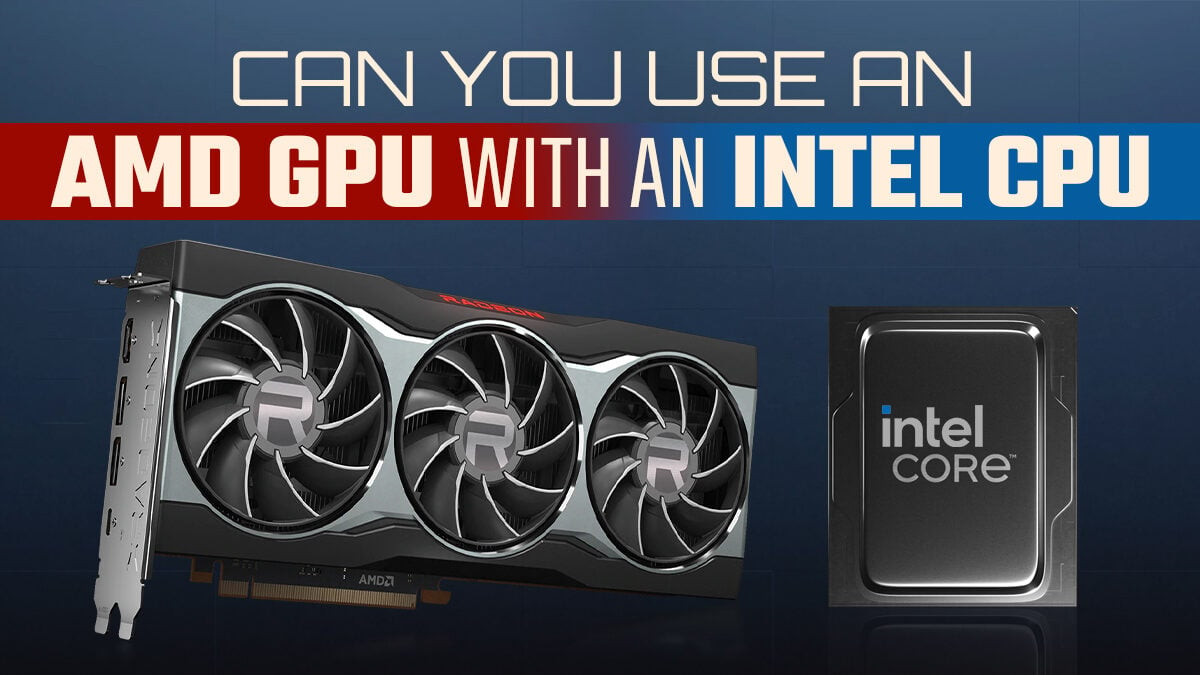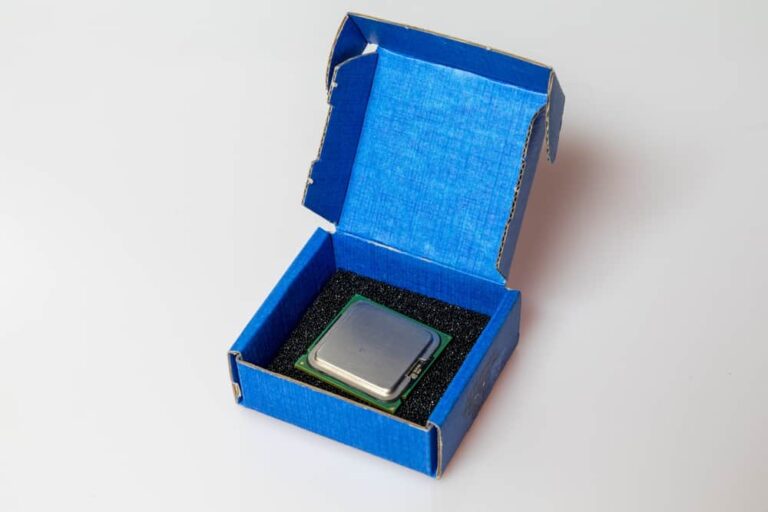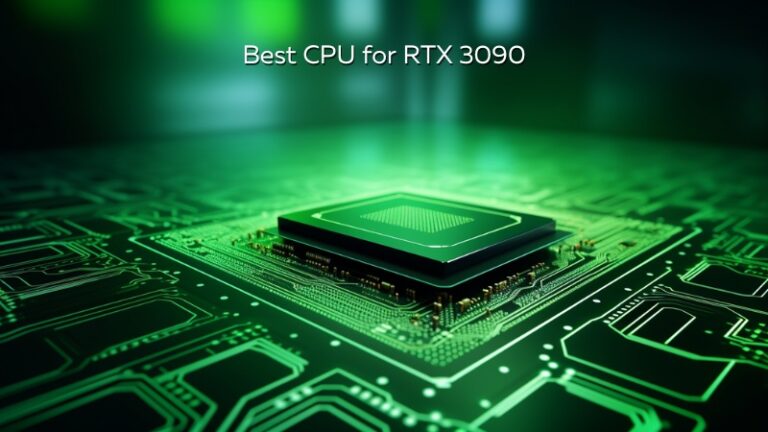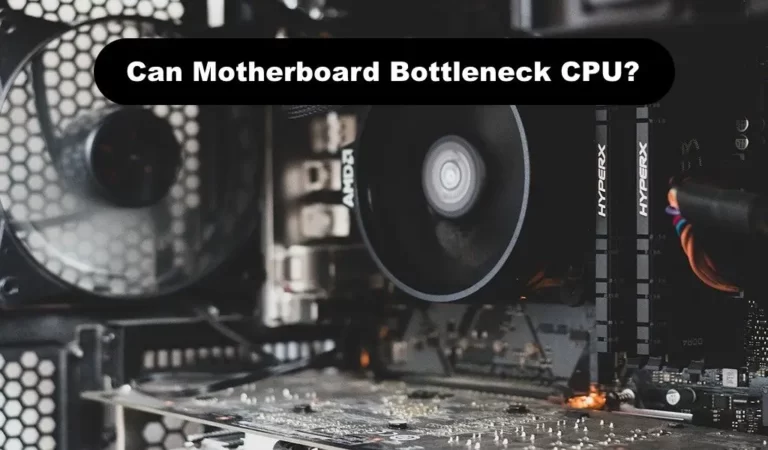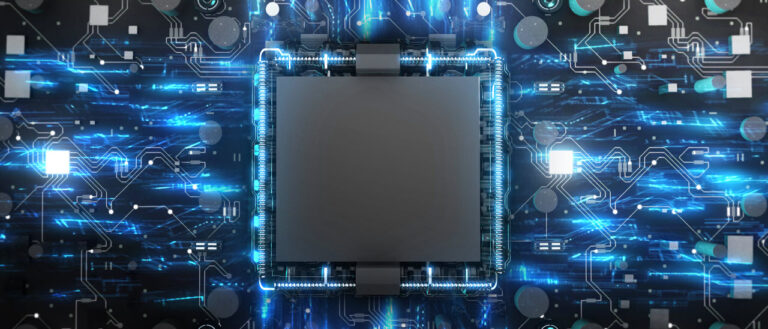Can You Use AMD GPU With Intel CPU?
Yes, you can use an AMD GPU with an Intel CPU.

Credit: pcguide101.com
1. Compatibility Between Amd Gpus And Intel CPUs
AMD GPUs and Intel CPUs are compatible, allowing you to use an AMD GPU with an Intel CPU for optimal performance.
This combination offers a powerful and efficient computing experience for tasks such as gaming and graphic-intensive applications.
Enjoy the benefits of both AMD and Intel technologies with this seamless compatibility.
Compatibility Between Amd Gpus And Intel CPUs
When it comes to building a computer system, one important consideration is the compatibility between different components.
In particular, many people wonder if it is possible to use an AMD GPU with an Intel CPU.
In this section, we will explore the interplay between AMD GPUs and Intel CPUs and the benefits of using them together.
Role Of The Gpu And Cpu In A Computer System
- The GPU (Graphics Processing Unit) is responsible for rendering and displaying images, videos, and graphics on the screen. It handles complex calculations related to graphics processing.
- The CPU (Central Processing Unit) is the brain of the computer, responsible for executing instructions and performing general-purpose calculations.
- Both the GPU and CPU perform different tasks but work together to provide a seamless computing experience.
Overview Of Amd Gpus And Intel CPUs
- AMD GPUs are known for their strong performance in graphics-intensive tasks. They are designed to handle demanding workloads related to gaming, video editing, and 3D rendering.
- Intel CPUs, on the other hand, are renowned for their excellent multitasking capabilities and overall processing power. They excel in tasks that require fast and efficient general-purpose computing.
The Interplay Between Amd Gpus And Intel CPUs
- AMD GPUs and Intel CPUs can work together in a computer system without any compatibility issues. They communicate through standardized interfaces and protocols such as PCI Express.
- The GPU and CPU collaborate to handle different aspects of computing tasks. The CPU takes care of general computing tasks, while the GPU focuses on graphics processing.
- This collaboration between the CPU and GPU allows for efficient multitasking and enhanced performance in graphics-intensive applications.
Explanation Of How Amd Gpus And Intel CPUs Work Together
- When an application requires graphics processing, the CPU offloads the specific tasks to the GPU. This offloading frees up the CPU to handle other computing tasks simultaneously.
- The GPU processes the graphics-related instructions and sends the results back to the CPU for final rendering and display. This division of labor allows for faster and smoother graphics performance.
Benefits Of Using Amd Gpus With Intel CPUs
- By combining an AMD GPU with an Intel CPU, users can enjoy the benefits of both components. They will experience excellent multitasking capabilities from the CPU and exceptional graphics performance from the GPU.
- AMD GPUs offer competitive pricing and a wide range of options to suit different budgets and requirements. This flexibility allows users to choose a GPU that best fits their needs while leveraging the power of an Intel CPU.
- The collaboration between AMD GPUs and Intel CPUs ensures that users can experience high-quality graphics for gaming, content creation, and other visually demanding tasks.
Using an AMD GPU with an Intel CPU is a viable option for building a high-performance computer system.
The combination allows for efficient multitasking, exceptional graphics performance, and an overall enhanced computing experience.
So, whether you are a gamer, a content creator, or an avid multitasker, the interplay between AMD GPUs and Intel CPUs can provide you with the best of both worlds.
2. Installing An Amd Gpu With An Intel Cpu
Yes, you can install an AMD GPU with an Intel CPU.
These two components are compatible, allowing you to create a powerful and efficient system for gaming or other graphics-intensive tasks.
Boost your computer’s performance by pairing the best of both worlds.
Overview Of The Installation Process
- Installing an AMD GPU with an Intel CPU is a common practice among PC enthusiasts and gamers looking to optimize their graphics performance. This section will provide an overview of the installation process, including choosing the right AMD GPU for your Intel CPU, factors to consider when selecting a compatible AMD GPU, recommended AMD GPU models for specific Intel CPUs, installation steps and considerations, as well as common troubleshooting issues and solutions.
Choosing The Right Amd Gpu For Your Intel Cpu
- When it comes to selecting a compatible AMD GPU for your Intel CPU, several factors should be taken into consideration. Here are the key points to keep in mind:
- Compatibility with your Intel CPU: Ensure that the AMD GPU you choose is compatible with the specific generation and socket type of your Intel CPU. Check the manufacturer’s specifications or consult online resources for compatibility information.
- Power requirements: Consider the power supply of your system and make sure it can handle the power demands of the AMD GPU. Check the recommended power supply wattage for the GPU and ensure it meets the requirements.
- Budget and performance: Determine your budget and desired level of performance. AMD offers a wide range of GPU options catering to different budgets and performance needs. Research benchmarks and reviews to find the best GPU that offers value for money and fits your requirements.
Factors To Consider When Selecting A Compatible AMD GPU
- Choosing a compatible AMD GPU involves considering several crucial factors. Here are the key points to keep in mind:
- GPU architecture: Different AMD GPU architectures offer varying levels of performance and features. Consider the architecture that best aligns with your requirements, such as gaming, content creation, or machine learning.
- VRAM capacity: The amount of VRAM (Video Random Access Memory) affects the GPU’s ability to handle higher-resolution textures and apply advanced graphical effects. Choose a GPU with sufficient VRAM for your intended usage.
- Cooling solution: Opt for a GPU with an efficient cooling solution, such as dual or triple fans, to ensure optimal thermal performance and prevent overheating. This is particularly important for users who plan to overclock their GPU.
- External connectors and ports: Check the available connectors and ports on the GPU to ensure compatibility with your monitor(s) and other peripherals. Common options include DisplayPort, HDMI, and DVI.
Recommended Amd Gpu Models For Specific Intel CPUs
- Here are some recommended AMD GPU models for specific Intel CPUs:
- Intel Core i5-9600K: AMD Radeon RX 5700 XT or AMD Radeon RX 5600 XT
- Intel Core i7-10700K: AMD Radeon RX 6800 or AMD Radeon RX 6700 XT
- Intel Core i9-10900K: AMD Radeon RX 6900 XT or AMD Radeon RX 6800 XT
Installation Steps And Considerations
- Before proceeding with the installation of an AMD GPU with an Intel CPU, make sure you have the following hardware and software requirements in place:
- Required hardware:
- AMD GPU of your choice
- Appropriate power supply
- PCIe x16 slot on the motherboard
- Power connectors for the GPU
- Required software:
- Latest drivers for the AMD GPU (download from the official website)
- Operating system compatible with the AMD GPU
Follow these step-by-step instructions to install an AMD GPU with an Intel CPU:
- Prepare your system by shutting it down and disconnecting all power sources.
- Locate the PCIe x16 slot on your motherboard and remove the corresponding cover or protective plate.
- Carefully insert the AMD GPU into the PCIe x16 slot, ensuring it is securely seated.
- Connect the necessary power cables from the power supply to the GPU, matching the required connectors.
- Proceed to close the system case and reconnect all power sources.
- Power on your system and install the latest drivers for the AMD GPU by downloading them from the official website.
- Follow the installation wizard for the GPU drivers, ensuring a successful installation.
- Restart your system to complete the installation process.
Common Troubleshooting Issues And Solutions
- During the installation process, you may encounter some common troubleshooting issues. Here are a few tips to resolve them:
- Driver conflicts: If you experience graphics driver conflicts or errors, perform clean uninstallation of the previous GPU drivers using the manufacturer’s provided software. Then, reinstall the latest drivers for your AMD GPU.
- Power supply issues: If you encounter stability issues or system crashes during heavy GPU usage, consider upgrading your power supply to ensure it can adequately handle the power demands of the AMD GPU.
- Compatibility issues: If you experience compatibility issues between the AMD GPU and your Intel CPU, check for BIOS updates for your motherboard and install the latest version. Sometimes, BIOS updates can resolve compatibility problems.
- Overheating: Ensure that your system has proper airflow and ventilation to prevent overheating. Clean any dust or debris from your system components, particularly the GPU and CPU cooling solutions.
By following these installation steps and troubleshooting tips, you can successfully use an AMD GPU with an Intel CPU, enhancing your system’s graphics performance and overall gaming experience.
3. Performance And Optimization Of Amd Gpus With Intel CPUs
Get optimal performance and smooth operation by using AMD GPUs with Intel CPUs.
Discover how these two powerhouse components work seamlessly together to enhance your gaming and computing experience.
Explore the possibilities of combining AMD’s top-notch graphics processing with the power of Intel’s central processing units.
Understanding GPU Performance And Optimization:
- When it comes to harnessing the full potential of your system, understanding how GPU performance and optimization work is crucial. Let’s dive into the specifics with AMD GPUs and Intel CPUs:
Benchmarking And Performance Comparison:
- Benchmarking and performance comparison play a vital role in assessing the capabilities of your hardware. Here’s what you need to know:
- Benchmarking allows you to evaluate the performance of both AMD GPUs and Intel CPUs objectively, providing valuable insights.
- Performance comparison involves analyzing the results obtained from benchmarks to determine how AMD GPUs and Intel CPUs fare against each other.
Comparison Of Gaming Performance Between Amd Gpus And Intel CPUs:
- Gaming enthusiasts, it’s time to explore how AMD GPUs and Intel CPUs stack up against each other in terms of gaming performance:
- AMD GPUs have gained a remarkable reputation for delivering exceptional gaming performance, thanks to their excellent graphics processing capabilities.
- While Intel CPUs excel in single-threaded performance, they may lag behind AMD GPUs in terms of pure gaming power.
Benchmarks And Tests To Evaluate Performance:
- To accurately assess the capabilities of AMD GPUs and Intel CPUs, relying on benchmarks and tests is essential:
- Various benchmarking tools such as 3DMark and PCMark provide reliable performance metrics for both AMD GPUs and Intel CPUs.
- Running real-world gaming tests on different titles and settings can offer insights into how well your system performs in practical scenarios.
Optimizing Amd Gpu Performance With Intel CPUs:
- Enhancing the performance of your AMD GPU when paired with an Intel CPU requires some optimization techniques:
- Overclocking your AMD GPU can provide a significant performance boost, but be cautious and ensure stability and adequate cooling.
- Tweaking in-game settings and adjusting graphics options can optimize the performance of your AMD GPU, maximizing your gaming experience.
- Utilizing software utilities like Radeon Software Adrenalin Edition can help fine-tune your AMD GPU settings for better overall performance.
Best Practices To Maximize Compatibility And Performance:
- Maximizing compatibility and performance between AMD GPUs and Intel CPUs involves following a set of best practices:
- Ensure that you have the latest graphics drivers installed for your AMD GPU and the latest system updates for your Intel CPU.
- Regularly check for firmware updates for your AMD GPU to optimize compatibility and improve performance.
- Maintain an appropriate balance between CPU and GPU power, considering the requirements of the applications or games you use.
Remember, pairing an AMD GPU with an Intel CPU can offer a powerful combination for gaming and other GPU-intensive tasks.
By understanding GPU performance, benchmarking, optimizing settings, and adopting best practices, you can unleash the full potential of your system for a seamless gaming experience.
Frequently Asked Questions For Can You Use Amd Gpu With Intel Cpu?
Can I Use An AMD graphics Card With An Intel Processor?
Yes, you can use an AMD graphics card with an Intel processor without any compatibility issues.
Can I Use An Amd Gpu With An Intel Cpu?
Yes, you can definitely use an AMD GPU with an Intel CPU. Graphics processing units (GPUs) and central processing units (CPUs) are separate components that can be mixed and matched from different brands. As long as your motherboard has the necessary slots and connectors, you can use an AMD GPU with an Intel CPU without any compatibility issues.
How Do I Connect An Amd Gpu To An Intel Cpu?
To connect an AMD GPU to an Intel CPU, you will need a compatible motherboard that has the necessary PCIe slots. Simply insert the AMD GPU into the PCIe slot on your motherboard, making sure it is properly seated and secured.
Connect the necessary power cables from your power supply unit to the GPU, and you’re all set. Install the required drivers, and your AMD GPU will work seamlessly with your Intel CPU.
What Are The Benefits Of Using An Amd Gpu With An Intel Cpu?
Using an AMD GPU with an Intel CPU can offer several benefits. AMD GPUs are known for their excellent gaming performance and cost-efficiency. They often provide better value for money compared to their competitors. Additionally, combining an AMD GPU with an Intel CPU can result in a well-balanced system that delivers high-quality visuals and smooth gameplay.
Conclusion
The question of whether you can use an AMD GPU with an Intel CPU has been thoroughly explored in this blog post.
We have seen that contrary to popular belief, it is indeed possible to pair these two different brands together.
However, compatibility issues may arise, and certain factors must be considered before doing so.
The most important aspect is to ensure that the motherboard you have supports both the AMD GPU and Intel CPU.
Additionally, checking for proper driver installations and maintaining updated software will help make the integration smoother.
While the performance may not be as optimized as when using matching brands, you can still achieve satisfactory results by properly configuring your system.
With the right setup and a little extra effort, you can certainly use an AMD GPU with an Intel CPU to enhance your gaming or other graphic-intensive tasks.

